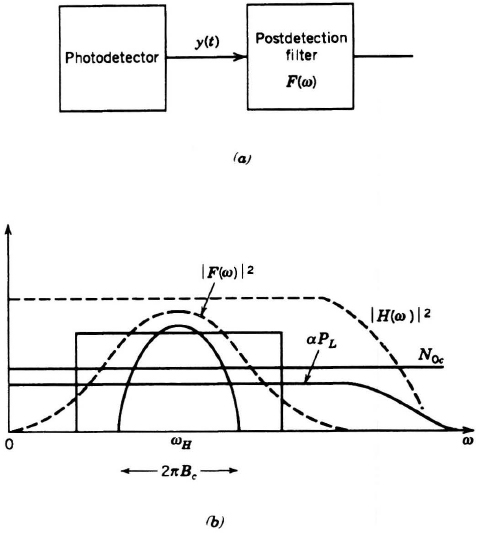5.2 HETERODYNE SIGNAL-TO-NOISE RATIOS
The modulated heterodyne carrier generated from photodetection can now be filtered out to recover the modulations. The overall system following the photodetector is shown in Figure 5.4a. A bandpass filter F(ω) is used to recover the modulated carrier, which is then RF demodulated to produce the information signal. The filtered output spectrum then appears as
![]()
where Si(ω) is the photodetected output current spectrum, and N0c is the spectral level of the output thermal noise current. The filter is generally tuned to the bandpass characteristic of the desired signal spectrum. If we assume a wideband optical detector [H(ω) = e] and a flat filter function [F(ω) = 1] over the bandwidth of the heterodyned signal, the filtered signal power after heterodyning is

Figure 5.4. (a) Postdetection filtering. (b) Output filtered spectrum (strong local field).
![]()
where ![]() is the time-average signal intensity of the heterodyned carrier in Eq. (5.1.10). Since ImA is the heterodyned carrier power, we can use Eq. (5.1.13) to write this in terms of the received laser power ...
is the time-average signal intensity of the heterodyned carrier in Eq. (5.1.10). Since ImA is the heterodyned carrier power, we can use Eq. (5.1.13) to write this in terms of the received laser power ...
Get Optical Communications, 2nd Edition now with the O’Reilly learning platform.
O’Reilly members experience books, live events, courses curated by job role, and more from O’Reilly and nearly 200 top publishers.

